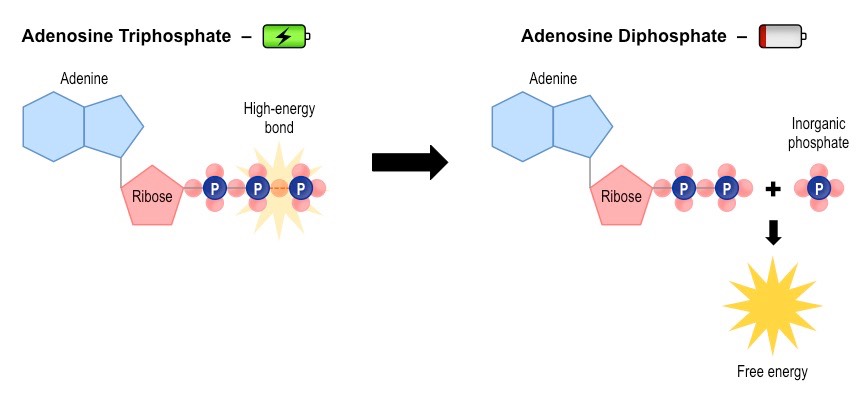![]()
Understanding:
• Cell respiration is the controlled release of energy from organic compounds to produce ATP
Cell respiration is the controlled release of energy from organic compounds to produce ATP
- The main organic compound used for this process is carbohydrates (glucose), although lipids and proteins can also be digested
There are two main types of cell respiration:
- Anaerobic respiration involves the partial breakdown of glucose in the cytosol for a small yield of ATP
- Aerobic respiration utilises oxygen to completely break down glucose in the mitochondria for a larger ATP yield
Cell Respiration Equation (Complete Breakdown)

![]()
Understanding:
• ATP from cell respiration is immediately available as a source of energy in the cell
ATP (adenosine triphosphate) is a high energy molecule that functions as an immediate source of power for cell processes
- One molecule of ATP contains three covalently linked phosphate groups – which store potential energy in their bonds
- When ATP is hydrolysed (to form ADP + Pi) the energy stored in the phophate bond is released to be used by the cell
- Cell respiration uses energy stored in organic molecules to regenerate ATP from ADP + Pi (via oxidation)
Relationship between ATP and ADP

